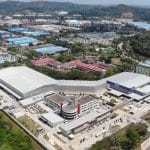In the mining, construction, and energy industries, heavy equipment is the backbone of operations. A single excavator, bulldozer, or dump truck can cost billions of rupiah, so accidents or damage can result in significant financial and time losses.
Insurance is a crucial solution for maintaining company stability. However, for many heavy equipment owners, processing insurance claims is challenging. Lengthy procedures, technical jargon, and unequal communication often leave the insured feeling disadvantaged.
This is where insurance brokers come into play—not just intermediaries, but professional advisors who ensure the insured receives their rights under the policy. This article explains in depth how insurance brokers work to resolve heavy equipment claims.
1. Main Duties of an Insurance Broker
Insurance brokers act on behalf of and in the interests of the insured, not the insurance company.
In the context of heavy equipment claims, the broker’s primary responsibilities include:
- Analyze the causes of accidents and potential policy coverage.
- Collect and verify supporting documents.
- Communicate the claim formally to the insurance company.
- Accompanying field investigations with loss adjusters.
- Conduct clarification and negotiation of compensation value.
- Ensure claim payments are received by clients correctly.
Each step requires technical expertise and experience, especially in understanding policy wording, exclusions, and claims practices in the heavy equipment industry.
2. Broker Steps in Handling Claims
- Receipt of Reports and Initial Examination
Once a client reports an incident, the broker immediately conducts an initial analysis. Information such as location, chronology, type of equipment, and extent of damage is collected to ensure the incident falls within the policy’s coverage.
The broker then helps prepare an official claim report to the insurance company within 24 hours to avoid administrative delays.
- Coordination with Surveyor or Loss Adjuster
Insurance companies typically assign a loss adjuster, an independent party who assesses the cause and extent of the loss. Brokers assist in each step of this process to ensure an unbiased interpretation of the facts.
The broker explains the actual conditions, including operational factors, the work environment, and the technical condition of the equipment. This assistance is crucial to prevent claims from being rejected due to misperceptions.
- Documentation and Document Verification
The broker ensures that all documents are complete and valid, including:
- Policy and coverage schedule,
- Chronology report,
- Photos and videos of the damage,
- Proof of ownership and value of the tool,
- Estimated repair costs from authorized workshops,
- Police report (if there is an element of a serious accident).
With complete documentation, the claims assessment process runs faster and more accurately.
- Claim Value Negotiation
The most crucial stage is negotiating the claim amount. Sometimes there are discrepancies between the loss adjuster’s investigation results and the client’s expectations.
Brokers act as professional negotiators who understand both sides: the technical aspects of risk and insurance policies.
The purpose is to ensure that the insured receives a reasonable compensation value and in accordance with the policy provisions.
- Payment Monitoring and Follow-Up
After claim approval is issued, the broker continues to monitor the claim until the claim funds are actually transferred to the client’s account or repair workshop.
Brokers also prepare final claim reports for internal documentation and company audits.
3. Challenges in Resolving Heavy Equipment Claims
Heavy equipment claims are often complicated because:
- The project location is remote and difficult to reach.
- The investigation process takes a long time.
- Large claim value (hundreds of millions to billions of rupiah).
- Differences in understanding between the insured and insurance.
- The policy wording does not match the field conditions.
Experienced brokers are able to anticipate these obstacles from the start by developing effective communication strategies, data completeness, and negotiation.
4. Case Study: Heavy Equipment Claims in the Field
One real-life example: an excavator sank in a coal mine in East Kalimantan due to a collapsed embankment. The estimated loss reached Rp 17 billion.
An experienced insurance broker will immediately do the following:
- Claim report to insurance within 24 hours,
- Collection of evidence and documentation,
- Surveyor assistance in remote locations,
- Negotiate the results of the investigation until they are fully approved.
In this case, the claim was paid 100% without dispute, thanks to the broker’s systematic and professional work.
5. L&G Insurance Broker’s Advantages in Claims Handling
As an official and OJK licensed insurance broker,
L&G Insurance Broker has in-depth technical expertise in the heavy equipment, mining and energy sectors.
Some of L&G’s main advantages:
- Experienced technical team who understand heavy equipment mechanics and risks in the field.
- Strong relationships with national and international insurance companies, facilitating communication and claim negotiations.
- Digital documentation process that shortens claim time.
- A track record of hundreds of successful claims, including total losses of over USD 1 million.
Currently, L&G insures more than 2,000 units of heavy equipment, mostly brands Sany, XCMG, SDLG, Zoomlion, LiuGong, Shantui, Lovol, and Weichai — Chinese brands that now dominate the Indonesian market.
This reputation makes L&G one of the most experienced heavy equipment specialist brokers in Indonesia.
6. The Importance of Using an Authorized Insurance Broker
Handling claims directly without assistance often results in suboptimal outcomes. Many insured individuals fail to realize that:
- Not all losses are covered by the policy,
- Errors in filling out the report can result in claim rejection,
- The process of communicating with insurance requires legal and technical understanding.
- A licensed insurance broker like L&G not only handles administration, but also protects clients’ interests legally and financially.
Additionally, all brokers are officially registered with the Financial Services Authority (OJK), ensuring transparency and accountability.
7. Added Value After Claim Completion
Once a claim is paid, a good broker doesn’t stop there.
L&G assists clients with post-accident risk evaluations, including:
- Review the clauses and coverage values.
- Develop accident prevention recommendations.
- Adapting insurance strategy for the next project.
- This approach helps companies increase efficiency and reduce the frequency of future claims.
Conclusion
Claimheavy equipment insuranceis a complex process that requires a high level of technical, legal and negotiation understanding.
Without proper assistance, companies may lose their claim rights or experience delays in payments.
An authorized insurance broker’s role is to ensure that every claim is resolved quickly, fairly, and according to the contract.
As an insurance broker with more than two decades of experience,
L&G Insurance Broker has proven its ability to handle hundreds of heavy equipment claims — from sinkings and fires to total losses — with satisfactory results for clients.
With a commitment to professionalism, integrity, and prompt service, L&G is not just a connector, but a strategic partner for companies that want to ensure their heavy equipment assets are always well protected.
—
DON’T WASTE YOUR TIME AND SECURE YOUR FINANCIAL AND BUSINESS WITH THE RIGHT INSURANCE.
HOTLINE L&G 24 JAM: 0811-8507-773(CALL – WHATSAPP – SMS)
Website: lngrisk.co.id
Email: halo@lngrisk.co.id
—















